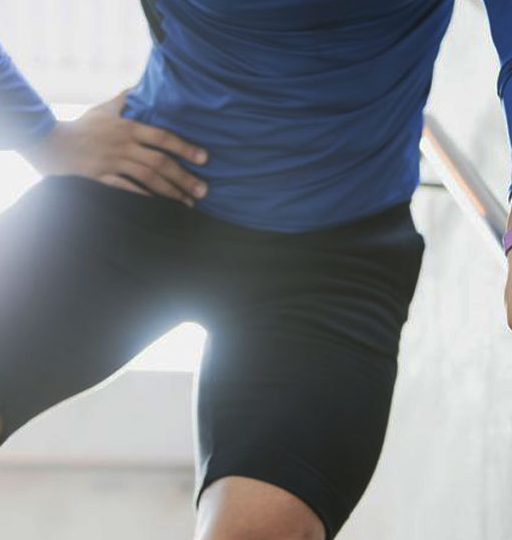
Osteitis Pubis
The groin and pelvic areas are very complex regions of anatomy and as a result, pain in the groin, lower abdomen and pubic area can be referred from multiple sources for a number of different reasons.
Osteitis pubis is one such reason and has been a common diagnosis in the past. Initially described as a complication in males following bladder and prostate surgery, it is also a common injury for soccer and Aussie rules players.[1]
How is osteitis pubis diagnosed?
Osteitis pubis can usually be diagnosed by a sports specialist physio by going through your pain history and an in depth physical examination.
A gradual onset of pelvic pain, along with pubic symphysis tenderness or resisted adductor testing is most common in osteitis pubis.
Predisposing factors that may contribute to osteitis pubis include:
- increased athletic participation or training load
- trauma
- pregnancy
- urological and gynaecological procedures.[2]
Specific athletic activities that commonly aggravate it include:
- sprinting
- kicking
- twisting, and
- cutting
What are the symptoms of osteitis pubis?
In addition to lower abdominal pain, you may also feel a radiation of pain into the groin, medial thigh, or abdomen.
The good news is that Osteitis pubis doesn’t require a surgical procedure or prescription medications. The key to treating this condition is rest.
What do I do if I have been diagnosed with osteitis pubis?
As with most sports-related injuries, active management of osteitis pubis and relative rest are vital steps toward a full recovery and return to the activities of daily life and sports pain free.
Remember that relative rest refers to refraining from activities that induce any type of discomfort to the area. NOT refraining from getting out of bed or off the couch.
In a mild case it usually only includes avoiding the sport that immediately preceded your pain symptoms and/or the activities that exacerbate the condition.[3]
Treatment by a sports specialist physio can assist in ensuring a faster recovery and the best outcome and may include:
- Recommendation of ice or heat application
- manual therapy including deep tissue massage and myofascial release
- dry needling
- joint mobilisation to restore range of movement in the hip, lower back and sacral joints
Part of the long term goal of avoiding further pain in the area includes the creation of a specialised home exercise program aimed at improving core stability, strengthening weak muscles (particularly hip adductors and gluteals) and stretching tight muscles.
Exercises to help strengthen the muscles around the pubic symphysis can also help you recover and prevent recurring problems. These exercises may include:
- abdominal core isometrics targeting the transversus abdominis
- abdominal crunches
- gluteal bridges with and without resistance bands
- swiss ball exercises for the abdominal core
- resistance hip strengthening with band
- eccentric hip exercises using a slide board
- side stepping with bands
- lunge and squat exercise variations
Is hydrotherapy helpful for osteitis pubis?
Hydrotherapy which included hip and core strengthening, running patterns, lunging and squat exercises has been shown to be beneficial for the treatment of osteitis pubis.
A study with the goals of achieving:
- pain relief with walking, prolonged standing
- pelvic stabilization with sitting, stance and gait
- strengthening of the core muscles (trunk, pelvis and lower extremity muscles).
“emphasizes the inclusion of the water based exercises in addition to the land based strengthening exercises to hip and abdominal musculature.”[4]
So, if you’re experiencing groin pain make an appointment at Lane Cove Physio on (02) 9428 5772 or send us an email at [email protected] to discuss your treatment options and whether hydrotherapy might be beneficial for you.
[1] Beer E. Periostitis of symphysis and descending rami of the pubis following suprapubic operations. Int J Med Surg. 1924; 37: 224-225
[2] Beatty T. Osteitis pubis in athletes. Curr Sports Med Rep. 2012;11(2):96-98.
[3] Choi H, McCartney M, Best TM. Treatment of osteitis pubis and osteomyelitis of the pubic symphysis in athletes: a systematic review. Br J Sports Med 2011; 45:57.
[4] Vijayakumar, P., Nagarajan, M., & Ramli, A. (2012). Multimodal physiotherapeutic management for stage-IV osteitis pubis in a 15-year old soccer athlete: A case report. Journal of Back and Musculoskeletal Rehabilitation, 25(4), 225–230.



